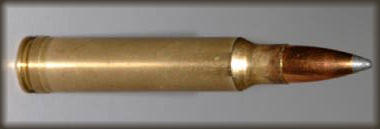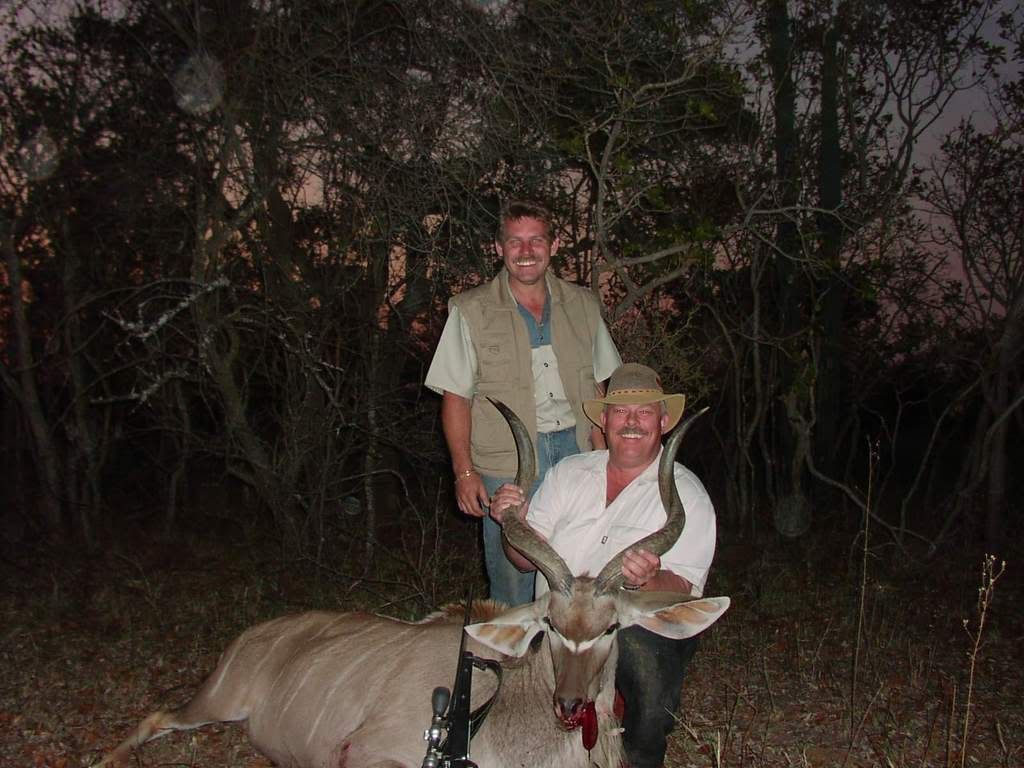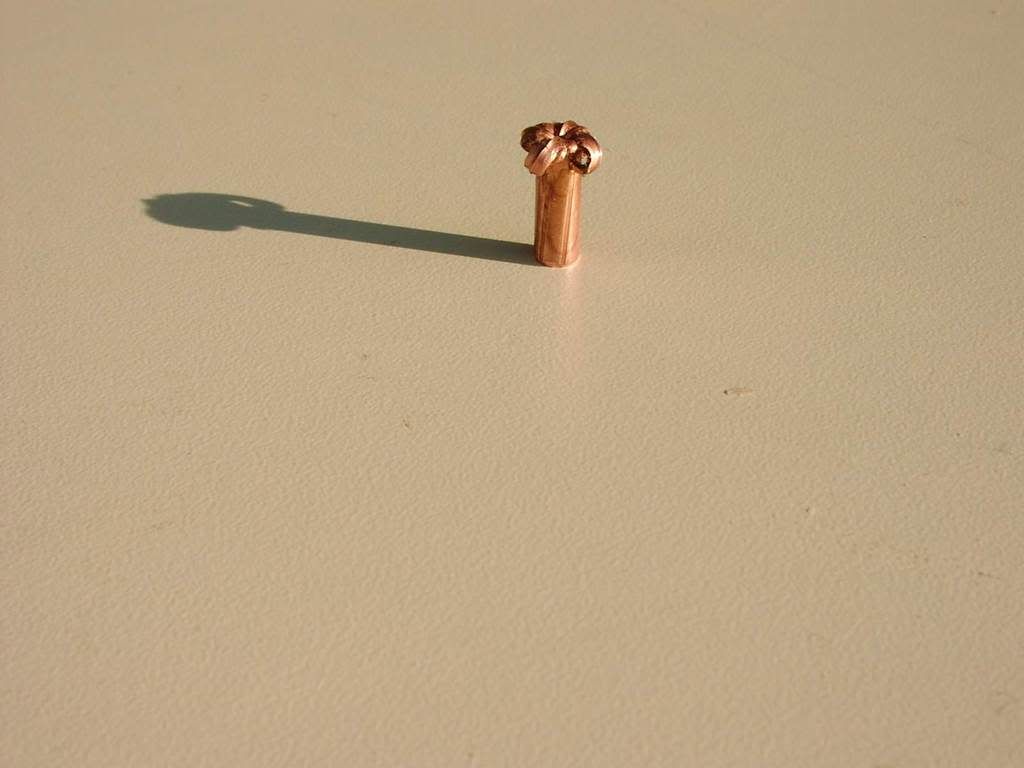

 The Accurate Reloading Forums
The Accurate Reloading Forums  THE ACCURATE RELOADING.COM FORUMS
THE ACCURATE RELOADING.COM FORUMS  Rifles
Rifles  Medium Bore Rifles
Medium Bore Rifles  Barnes TSX and pressure
Barnes TSX and pressureGo  | New  | Find  | Notify  | Tools  | Reply  |  |
| One of Us |
This query has been partly answered before, but please advise again. I am developing a 130gr TSX .270 load. Our local South African powder manufacturer does not have loads for the TSX, so only officially recommends the conservative Barnes "X" loads that are relatively mild. Question: Do the bands of the TSX really result in less pressure and how much so? I am at the max of their recommendation without pressure signs and plan to increase that, cautiously, with advice from AR. | ||
|
| One of Us |
Karoo, Give us your load and velocity. Warrior | |||
|
| One of Us |
I have loaded the 30 Cal TSX and Nosler AccuBonds with the same powder charge and near identical velocities, sugesting like pressures... _____________________________________________________ A 9mm may expand to a larger diameter, but a 45 ain't going to shrink Men occasionally stumble over the truth, but most of them pick themselves up and hurry off as if nothing had happened. - Winston Churchill | |||
|
| One of Us |
Warrior, unfortunately I don't have the velocity, but the load is 55gr S361. If you look at Somchem's book, the figures they give for the Barnes X are very mild. | |||
|
| One of Us |
I load 165 and 168 grain bullets for a 30/06. I use the same powder charge with the various Hornady offerings, Barnes TSX, Nosler match bullets and Barnes banded solids and get good accuracy and no signs of excess pressure with all. When I chronographed them, loads with the Barnes bullets have been a little faster than with others suggesting a little higher pressure. I use reloading manuals for information on where to start a load but determine the maximum load myself. When increasing powder charges, usually group sizes decrease in size and then start to widen again. I keep my load where the group size is the smallest which is generally below the maximum load listed in the manual. If group sizes are still decreasing and I don't have any signs of high pressure and I'm shooting the cartridges in a firearm with a strong action, I will occasionally push the load above the maximum load listed. | |||
|
| One of Us |
The Importance of Adequate Bullet Weight Even a Barnes-X needs weight Frans Oberholzer; an avid supporter of the Barnes-X bullet, that is known for its excellent penetration ability, was hunting kudu when he encountered shallow penetration with his 270 Win (Ruger M77) at a distance of 300 yards. That day Frans only had his 'Springbok load' with him - 130 gr Barnes-X bullets loaded to 2,932 fps. This shot was never to be, but his friends dared him to see what a marksmen Frans really was. True to form, Frans put the bullet in the vital area - it ran another 80 yards before going down to perish. At first glance, one might say that the caliber/bullet/load combination ought to be adequate - one of the best premium grade bullets at the highest velocity. What could be wrong then? ... The young kudu bull was 300 yards away, but stood for a perfect broadside shot, aiding an easy kill, if aimed for the heart. These are the facts :- The bullet retained 100% of its original weight The bullet expanded to 2x diameter The striking velocity at 300 yds was 2,307 fps The only bone that was encountered was the first rib on its way in It went through one lung and only pierced the one ventricle of the heart How do we make sense of this? The capability of the 130 gr Barnes-X was stretched at 300 yards. Clearly at that distance the terminal momentum over XSA was too low for deeper penetration. What if it was an angled shot instead of a broadside shot - it may not have reached the vital organs. A lesson we all can learn from! You may then ask which caliber is more ideal for kudu-sized antelope at 300 yds? In my opinion you will be well advised to consider a heavier bullet such as a 180 grain Barnes-X or TSX in a 30-06 or .300 Magnum, as big kudu bulls can weigh up to 660 pounds. This will give you the edge on angling shots for deeper penetration at longer ranges.  Warrior | |||
|
| One of Us |
Post deleted due to unsafe load information by: ar corey | |||
|
| One of Us |
Thanks for the advice and it seems that I can proceed with caution and look forward to the day Somchem gets to testing the TSX for realistic load data. I agree that the TSX does not make a bullet-rifle combination a super weapon and have a 338 Win Mag for those bigger animals. | |||
|
| One of Us |
Karoo, The Barnes-X or the improved version in TSX is indeed a star performer on game - they out penetrate most other expanding bullets, weight for weight, as they only expand to twice diameter, whereas other brands expand more - from 2.2x to 2.4 times like the Rhino Solid Shank bullet. Here is the bullet that Frans retrieved, showing its classical performance:  A simple way to look at penetration capability is to focus on Mo/Xsa. The higher the number, the better the penetration. It is a question to balance the force applied (momentum) to the resistance by virtue of expanded area of the bullet. By comparison a 7x57 loaded to 2,600 fps would impact at 300 yds with a higher momentum value than a 270 Win, loaded with a 130 gr bullet to 2,932 fps - here it is: Caliber ------ Weight --- Impact velocity @ 300 yds - Momentum 270 Win ----- 130 gr ------------- 2,307 fps ------------- 42.84 ft-lbs/sec 7x57 mm ---- 160 gr ------------- 2,120 fps ------------- 48.46 ft-lbs/sec Interesting to note the superiority of the "dimunitive" 7x57mm, and that is so by virtue of more bullet weight despite a lower striking velocity. Even though the above is so, I would not use my 7x57 mm on kudu at 300 yards, unless I have no other option available. If you do these calculations for a 300 Win Mag, you will see why it is the choice for so many long-range hunters. The 300 Win Mag would impact at 2,374 fps @ 300 yards and yield 61.05 ft-lbs/sec, way up from the other two calibers. Your 338 Win Mag would be absolute potent on big game with the very popular 210 gr TSX BT bullet in the .338 caliber. Warrior | |||
|
| one of us |
Hey Karoo, It is impossible to answer that question due to the variations between the manufacturing Tolerances for both the Bullets and Firearms. There is only one tried and true, totally SAFE way to get reliable Pressure Indications, good old CHE & PRE. I prefer PRE because it works on all cartridges, even the old low pressure ones. On those the MAX SAFE Pressure can be reached before a CHE reading is attainable. You do need a set of 0.0001" capable Micrometers to read PRE and you need to follow the above instructions. If you do that, you will always know when your Loads are SAFE. Best of luck to you. | |||
|
| One of Us |
Is there some reasonable formula that incorporates a relationship between momentum and the body mass of the game animal to be shot through? | |||
|
| One of Us |
Warrior You said he was using a spring bok load or not a max load,this is the variable that can not be counted on. Look at the recovered bullet, it has a very long shank and small frontal expansion. I would be willing to bet that if the bullet was driven to its max, the outcome would have been different. With that said, if i were intenetionally hunting, the larger species of plains game with a 270 i would probably use the 140gr TSX. I know its only 10grains heavier but it will still allow for fast velocities with a little more weight. I think the true lesson of this story is- find a good MAX load with any bullet, and stick with that ONE good load. Under-loading for smaller species is just looking for trouble when a bigger one is found and then shot at. In other words, your example is not a valid one, as that bullet could have been driven a couple of hundred FPS faster which could have made all the difference in the world. | |||
|
| One of Us |
Warrior As a side note; 30-06 i would use the 165gr TSX, 300 win mag, would be a toss up between the 165 and 180gr TSX really which ever shot better. JJ Hack has used the 165gr TSX in his 30-06 in Africa for many heads of game, and he is totally satisfied with its performance. There are people who have used the 130gr X bullet in an 06 to take moose. While i wouldnt use that combo, the 130gr X or TSX is a real good performer in the 06 and transforms it to a real flat shooter for smaller big game. | |||
|
one of us |
Karoo, take your existing load and add powder in .4 grain increments. Load up maybe 8-10, adding additional powder to each one. Go out and shoot them beginning with the least added powder. Watch for sticky bolt. Do it on a warmer day. When the bolt gets sticky, stop. Take you cases and measure the OD of the neck and body. If there are any rounds left, pull those bullets and powder. Go do 4 test rounds at the same charge that is .4 grains less than the one that caused the sticky bolt. If they are safe and you still want to play, add .2 grains of powder and test again. (I feel like the latter is a waste of time personally). In 3 270 rifles I've loaded for, and a few 30 caliber rifles, most all of them take more than published max, and in some it is upwards of 3 to 3.5 grains more before the first sign of pressure. If it is available, you may consider trying the new Reloder 17 powder. It is Swiss made. It has produced higher velocities in most if not all cases than other powders for a given bullet. Re19 and Re22 are usually excellent choices as well. I have settled on H4350 and Re19 for my 270/130 TSX loads. Ted Kennedy's car has killed more people than my guns | |||
|
| One of Us |
Fgulla, Frans loaded the 130 gr Barnes-X bullet to 2,932 fps. That is pretty much the max for his rifle where it grouped best. With SA podwer S365, Somchem gave a max load with this bullet at 2,996 fps. It stands to reason that more velocity would increase momentum, thus increasing the "punch". The 165 gr TSX bullet in the 30-06 does in fact give sterling performance on game. The larger case of the 300 Win Mag suits the 180 gr TSX just fine. The risky element is when a light bullet is used on big game at distances beyond 300 yds, as the momentum values start to deteriorate to a critical levels. I am with you on one load per caliber regardless of the size of the game - from sprinkbuck to kudu. That way you get to know your rifle better ito its trajectory and where it shoots. Warrior | |||
|
| one of us |
John Barsness wrote not too long ago that his wife shot through a Bison broadside with 130 TSX and .270 Win at about 150 yards. A little bit closer but also about 2.5x heavier than a kudu. I expect the 130 not penetrating was a fluke of some sort. Funny things happen when a bullet hits game. I have seen 180 and 200 premium bullets out of a .300 RUM not fully penetrate <125 lbs doe deer. Maybe I need more momentum. Lou | |||
|
| one of us |
Hey Jimmy, Thanks for the heads-up on the link Erroring out. The old link apparently died, so I re-linked it to a new post that is up and working. | |||
|
| one of us |
Hey Jimmy, They used to be available in the old Gun Rags and on some of the Factory Ammo boxes. Maybe Gun Digest used to have one in it too. There has been a "slight" shift in the old Rules-of-Thumb created by the Expanding Solids, when they expand and not loose petals. When they work properly, the Expanding Solids allow a person to use a bit less weight to achieve the same thing as a good old Standard Grade Lead Core Bullet design. The lighter weight allows some of those Bullet designs to be driven a bit faster which is supposed to reduce the Trajectory a bit. Normally the Trajectory advantage is beyond 400yds, which means very few people get to take advantage of it. As always, it is still best to make a Bullet Selection toward the Heavy side, factor in actual first-hand experience from people who have used them on game and then make your choice. Plenty of excellent Bullets to choose from. Good Hunting and clean 1-shot Kills. | |||
|
| One of Us |
Does anyone else think it is ironic when someone posts pictures of themselves and their trophy and proceeds to describe the way in which their bullet failed? Dave Dave DRSS Chapuis 9.3X74 Chapuis "Jungle" .375 FL Krieghoff 500/.416 NE Krieghoff 500 NE "Git as close as y can laddie an then git ten yards closer" "If the biggest, baddest animals on the planet are on the menu, and you'd rather pay a taxidermist than a mortician, consider the 500 NE as the last word in life insurance." Hornady Handbook of Cartridge Reloading (8th Edition). | |||
|
| one of us |
Barnes website states the following: 1. What load data do I use for the Triple Shock Bullet? Answer. We recommend that you use the minimum X Bullet load data to start. To compensate for the reduced pressures associated with the Triple Shock, you may have to work up 1 to 2 additional grains above listed loads to achieve equal pressures. Pressures can jump dramatically; therefore we recommend that you work up in 1/2 gr. increments until you are no more than 1 to 2 grains above the listed max load or until signs of excessive pressure are evident. Whichever comes first. You should watch for excessive case head expansion, sticky bolt lift, flattened primers or shiny spots on the base of the case. If you have case head expansion of more than .0005″ with a once-fired case, this is a sure sign of excessive pressure. You will have to measure your case head with a Blade Micrometer just in front of the extractor groove, or you can use a regular micrometer and measure the belt on belted cases, before and after shooting. When any of these signs appear, back down one full grain and you will have a max load for your gun. If you do not feel comfortable working up a load, or don’t have the proper equipment, then we suggest following the recommended X-Bullet load data. For the 168gr .308 cal Triple Shock Bullet, use the 165gr X-Bullet data. I recently started shooting the 225 grain TTSXs and found I had to load 1 grain beyond the published max load to get comparable velocity. Barnes has load data on their website too. | |||
|
| one of us |
Hey Sep, Great post! | |||
|
One of Us |
Bullet failure is a flaky subject because some discuss bullets that are not recovered and some discuss the ones that are..... Further many believe the bullet cannot be assumed to have failed unless it was recovered.....and if it was recovered then one must have found it in a dead animal.....hardly grounds to claim a failure..... About the only failures of a bullet I've encountered was a complete core-jacket separation of a Remington core-lokt and yes....it was found in a dead whitetail buck fired from 7X57 140 grain Remington factory load....hardly a "blazing fast" load.....the bullet did in fact kill the buck but the separation is not a good sign at all. In another situation a pronghorn was hit broadside by a 130 grain .270 Federal Premium (Sierra boattail)and the bullet left a .277 diameter entrance hole and a .277 diameter exit hole.....yes the antelope was dead after it ran 100 yards and yes the bullet wasn't recovered..... The grounds by which one claims a bullet failure are many and a dead animal cannot be assumed to mean there wasn't a failure of the bullet IMO /////////////////////////////////////////////////////////////////////////// "Socialism is a philosophy of failure, the creed of ignorance, and the gospel of envy, its inherent virtue is the equal sharing of misery." Winston Churchill | |||
|
| One of Us |
It is ironic to read that some see bullet failure in Frans' Barnes-X bullet. In fact I see the Barnes-X as a superior bullet, the kudu is dead and Frans is an above average marksman. What we see in Frans' case is that the range was in fact very long for a light bullet and the momentum value diminished progressively on its course. Thus penetration was not as deep as one would have liked. Barnes-X bullets typically mushroom to twice its diameter. The terminal momentum in relation to the mushroom was fairly low by comparison and as someone mentioned a 140 gr Barnes-X would have made all the difference in providing that extra bit of momentum. The motto of the story, when hunting big game it is safer to step you bullet weight up when we use bullets that expand, and especially those that yield larger mushrooms than twice diameter, as angled shots require deeper penetration than broad-side shots. Or on a given day you want to try a farther shot and you are stuck with a light weight bullet that loses momentum faster. I think it is through experiences such as this one of Frans, and others of our mates, that we become more conservative hunters as we learn from each other. Warrior | |||
|
| Moderator |
So, how can you draw such a definitive conclusion based on one example? "Ignorance you can correct, you can't fix stupid." JWP If stupidity hurt, a lot of people would be walking around screaming. Semper Fidelis "Building Carpal Tunnel one round at a time" | |||
|
| One of Us |
It did happen and the mere fact that there is a possibility that it could happen again is enough for me to take precaution. The old adage ... use enough gun ... is applicable. Warrior | |||
|
| one of us |
Hey Vapo, Unless things have changed, on their Standard Grade Bullets, I believe Remington inserts a Lead Slug into a partially formed Jacket(Cup) that has "Forming Die Lubricant" on the Cup. As do all the Standard Grade Cup/Lead Core bullet manufactures. Many years ago Remington had the Wasp Waist design coupled with a slightly Heavier wall thickness on their old Round Nose designs. I do not remember one of these separating and the only recoverys were in a few Bears and lengthwise shots on Hogs and Deer. Perhaps there was a few separations with those RNs and I just do not remember them. I have found quite a few Cup/Lead Core bullets that the Core was still in place, but would slip right out of the Jacket during rinsing off. And some that the Lead Core had separated from the Jacket. Is it actually a Bullet Failure if a "Lubricated" Lead Core separates from the Jacket? Or is it just something that can be expected to happen from time to time due to the design? | |||
|
| Powered by Social Strata |
| Please Wait. Your request is being processed... |
|
 The Accurate Reloading Forums
The Accurate Reloading Forums  THE ACCURATE RELOADING.COM FORUMS
THE ACCURATE RELOADING.COM FORUMS  Rifles
Rifles  Medium Bore Rifles
Medium Bore Rifles  Barnes TSX and pressure
Barnes TSX and pressure

Visit our on-line store for AR Memorabilia

